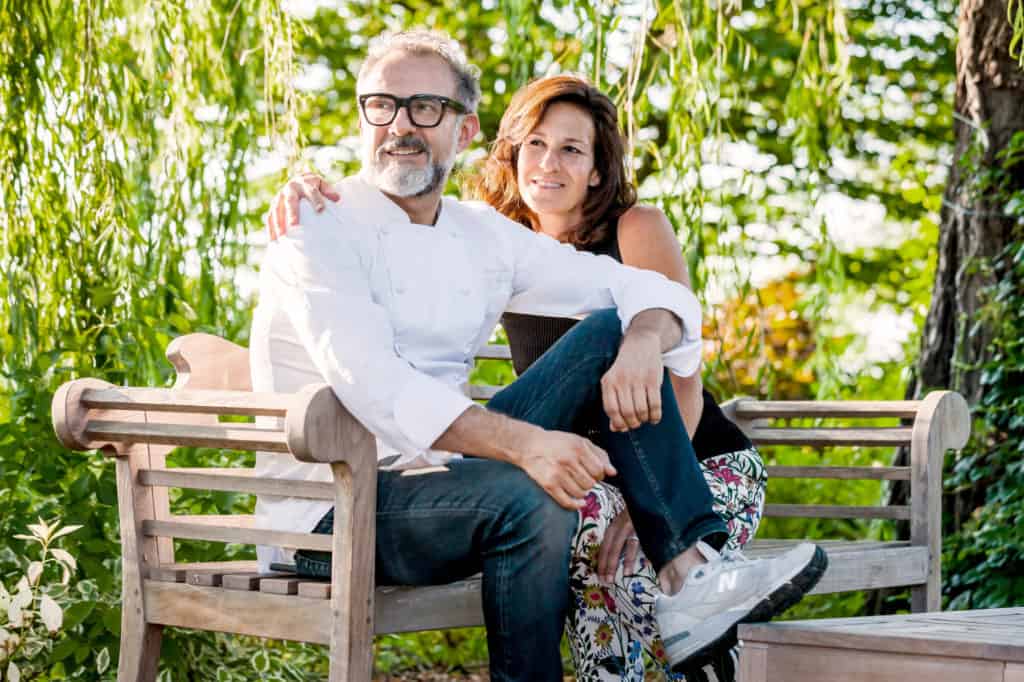Redefining Country-Style
Meet Lara Gilmore for just a few minutes, and it’s obvious she’s a visionary of the unparalleled kind. Gilmore, a food creative, and the life and business partner of world-renowned Michelin starred chef Massimo Bottura, has spent nearly the last three decades blurring the lines between art, food and creativity, and then hitting the Reset button with Casa Maria Luigia, a jewel of a property in the Emilia countryside on the outskirts of Modena.
Kinetic creativity combusted with Lara and Massimo’s incredible chemistry, intense passion for art and design, and a sixth sense for space, to create a home-away-from-home bed & breakfast is testament to the way Lara lives her life – artfully, organically and with gusto. And let’s not forget a sprinkling of spirituality through incredibly delicious food.
What is it The love story between you and Massimo is not only a marriage, but also a partnership in the business you share. How did that come to be?
Massimo and I met very serendipitously years ago at a café in Soho in NYC. I was in my early twenties, entering the contemporary art world whether curating or working for magazines, making ends meet working for restaurants as a waitress and Massimo was taking a sabbatical year off from working at a restaurant in the countryside. It started with a great meeting of the minds. He invited me to Modena to come see where he lived and where he was from. I fell in love with the place. Everyone knows where Modena is, it’s right off the beaten track and yet, right in the middle of everything. For me, it was a city that was a completely new discovery, in terms of its food culture and through Massimo’s eyes, I was able to discover all these things about Italy that I didn’t really know. I actually didn’t marry Massimo first, I married the restaurant first. We decided to open a restaurant together and on the opening day of the restaurant, I happened to be in the US for unplanned circumstances. Half an hour before the opening, Massimo called me in New York and asked me basically to marry him over the phone. Years later, I realised that marriage proposal was really a proposal to marry the restaurant, to marry a project and to marry an idea. It’s been our first baby and what keeps us together and what keeps us focused.

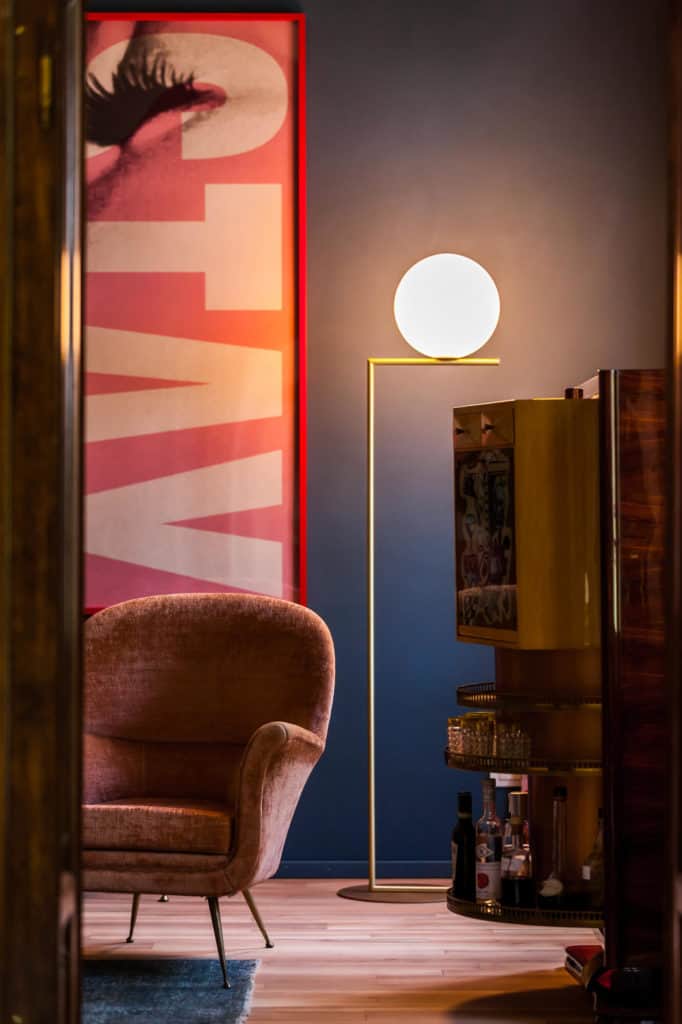
How did you and Massimo find this beautiful property and what did you envision Casa Maria Luigia to be?
My whole life has been dedicated to making people know where Modena is and getting people to come here, eat in Modena and walk around the town. A couple years ago, we started looking for a small country home for weekends, a place where we could go to get away from it all, but not too far. It took us many years to find this special place in the breadbasket of the region of Emilia Romagna and with it, we wanted to open a different kind of hospitality. The house is located about 12km outside of Modena, in the full countryside, where it is green with very flat plains, big sky, agricultural fields. When we saw the place, we envisioned the carriage house could be a place for a dinner party for 12 or 20 people and we could create a second Osteria Francescana. We each started dreaming each in our own direction about what the house could become, without really drawing up a business plan or thinking it through properly. It’s an Osteria Francescana with 12 rooms, embracing products and flavours, ingredients and the agricultural landscape of this region. We have filled it with our favourite things: a selection from our contemporary art collection, books and vinyl records, and a pantry full of iconic Emilian ingredients, such as Parmigiano Reggiano, Aceto Balsamico and Lambrusco.
It feels like you’re in someone’s house here, there is a homey feeling and the art – there are incredible works of art. Can you tell us more about how you selected the pieces?
We wanted to share the art as a way of communicating with guests visually, what we were thinking about, having art that was provocative. For example, we always dreamt about buying an Ai Wei Wei piece, and this Lego piece was the perfect size for the living room. Some people are appalled; how could you break something like that? How could you be so disrespectful of the past? But that series of images for us is so hopeful. We can look at the past and we can break with the past, but look at the possibilities, look at everything you have on the floor, all those pieces, picking them up, putting them together, reconstructing them and turning them into a new kind of future without disregarding the past, you’re actually bringing it forward, taking the best of the past and bringing it into the future. A message which is very powerful for us. It’s eternal, it’s Lego, it’s fun! It will be the last thing standing in that house 500 years from now. Another piece, the Tracey Emin “Red, White & Fucking Blue” piece – I thought immediately, I don’t want people to think I don’t love my country even as I’ve been living as an expat for so many years. The moment we put it up, we realised – It’s not a negative about your national colours. It’s about ‘we are doing this’, we are going all out, we are going to be as red, white & fucking blue in all that we can, it’s an affirmative, we are not going to hold back on anything, whether that’s the art, the food, the landscape, doing the best we can with our organic gardening, creating a home away from home for travellers. For me the red, white & fucking blue is about ‘yes, yes we can’.
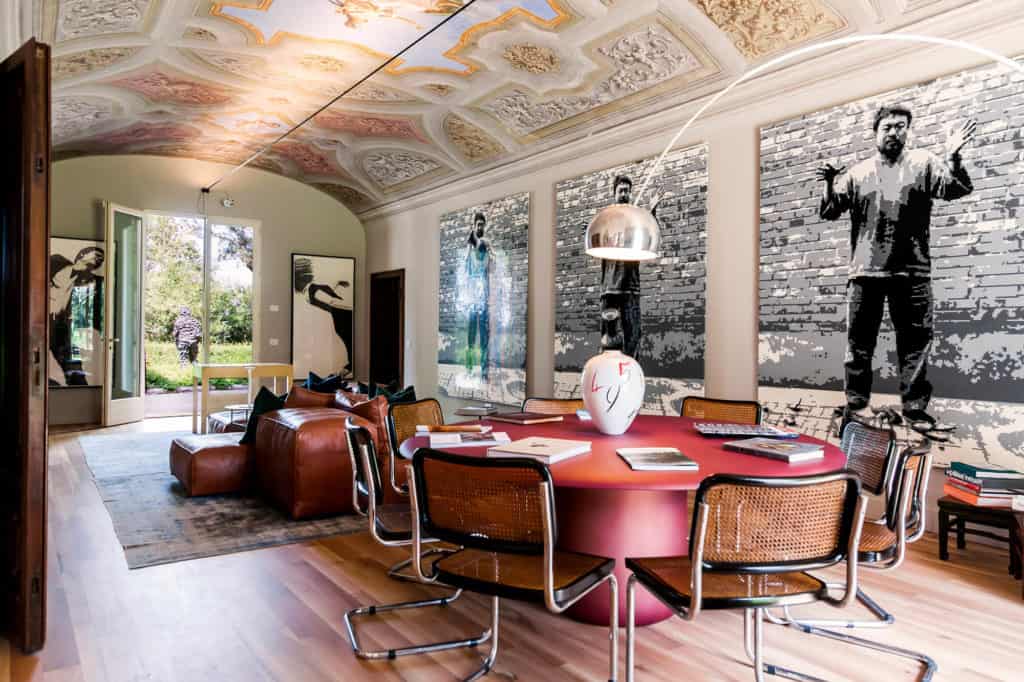
Tracy Emin’s “Red, White & Fucking Blue” neon on the wall. Credits Marco Poderi 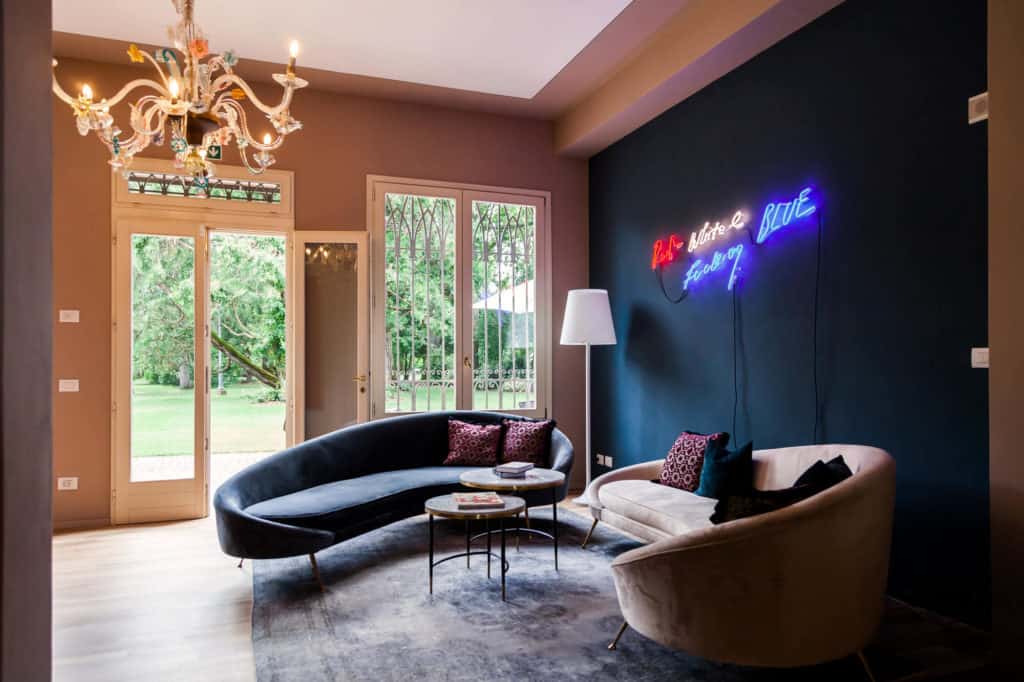
Ai Wei Wei’s Lego Portraits. Credits Marco Poderi
Of course, food is a big part of the experience at Casa Maria Luigia. What are some of the unique culinary experiences here that make it different from your other projects?
We have a professional kitchen in the carriage house similar to Osteria Francescana but in the homey, comfy green kitchen of Casa Maria Luigia, we have the ‘giving refrigerator’ that is similar to Shel Silverstein’s ‘giving tree’ and reminiscent of my mom’s refrigerator growing up when I could walk into her kitchen and at any point in time, there was something to eat. The idea is you can open up the refrigerator on your own and find these individual, small delicious portions of healthy, yummy snacks that you can enjoy and it’s constantly changing and constantly seasonal. A recent guest commented that he felt like he was back at his parents’ house but even better, there’s a bottle of wine t open and one can have a snack! It’s not a full meal, it’s not restaurant but it’s a sense that you’re at a kitchen counter, sharing food and info with others – why you’re here, where you’re going, etc. It’s about creating a space for a community; however contemporary it may be. People serve themselves a glass of wine – people are intuitive about a kitchen and once they’ve eaten something, they tend to put things in the dishwasher or kitchen sink. There’s an amazing sense that you’re part of something, you feel like you’re at home and you’re part of something special. It’s different than a restaurant service, it’s much more about nourishing and there is an exchange, a lot of love is going on there, rather than a theatrical experience.
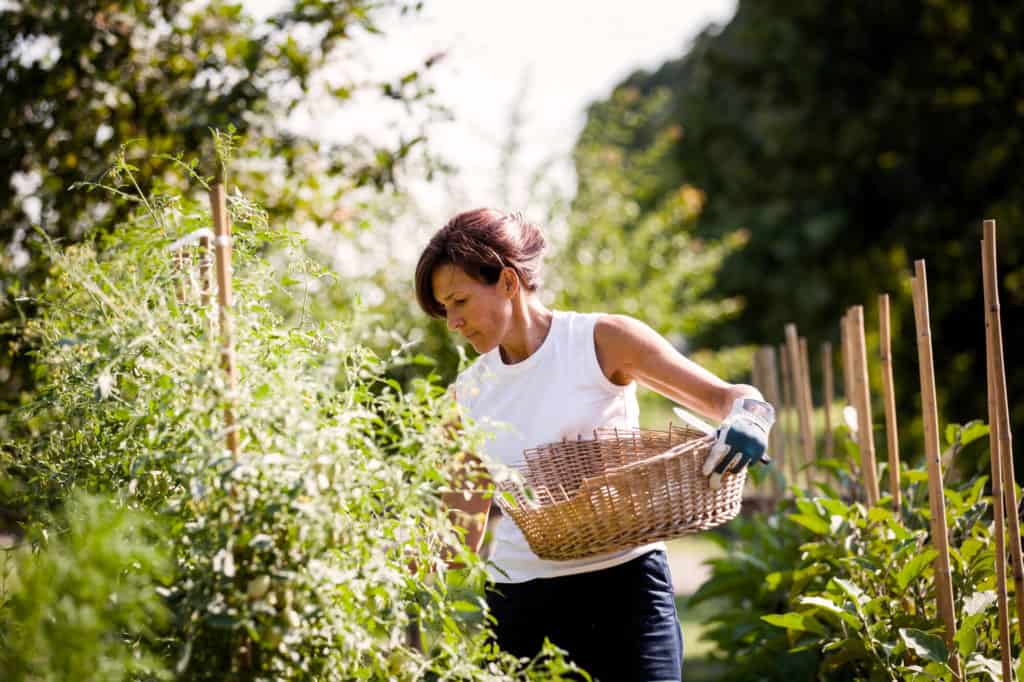
Head Chef of Casa Maria Luigia, Jessica Rosval. Credits Marco Poderi 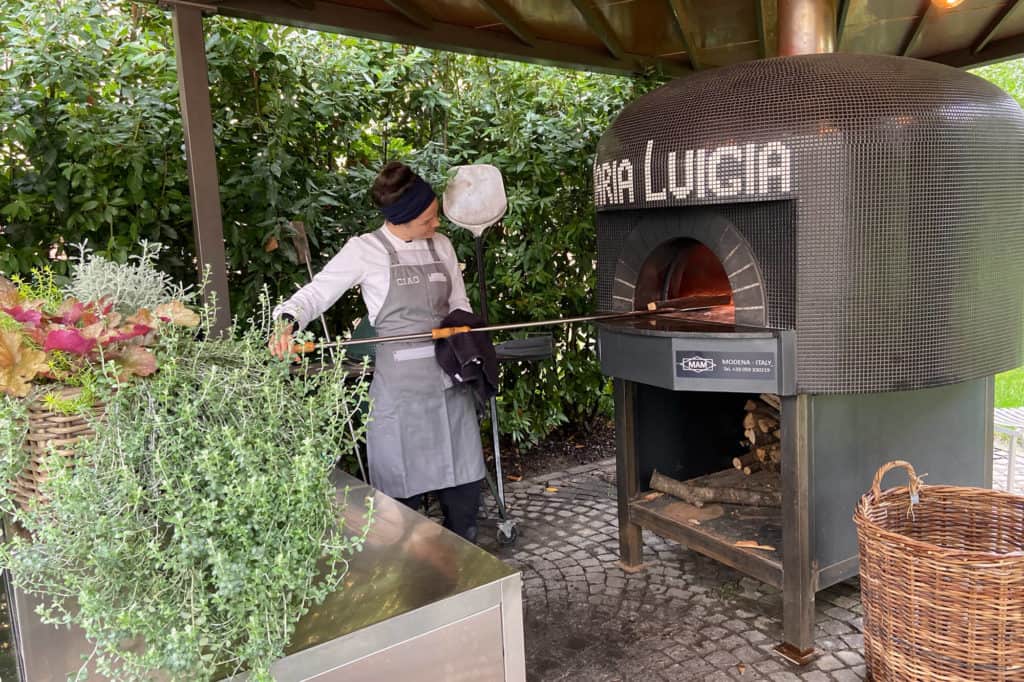
Laura Gilmore. Credits Marco Poderi 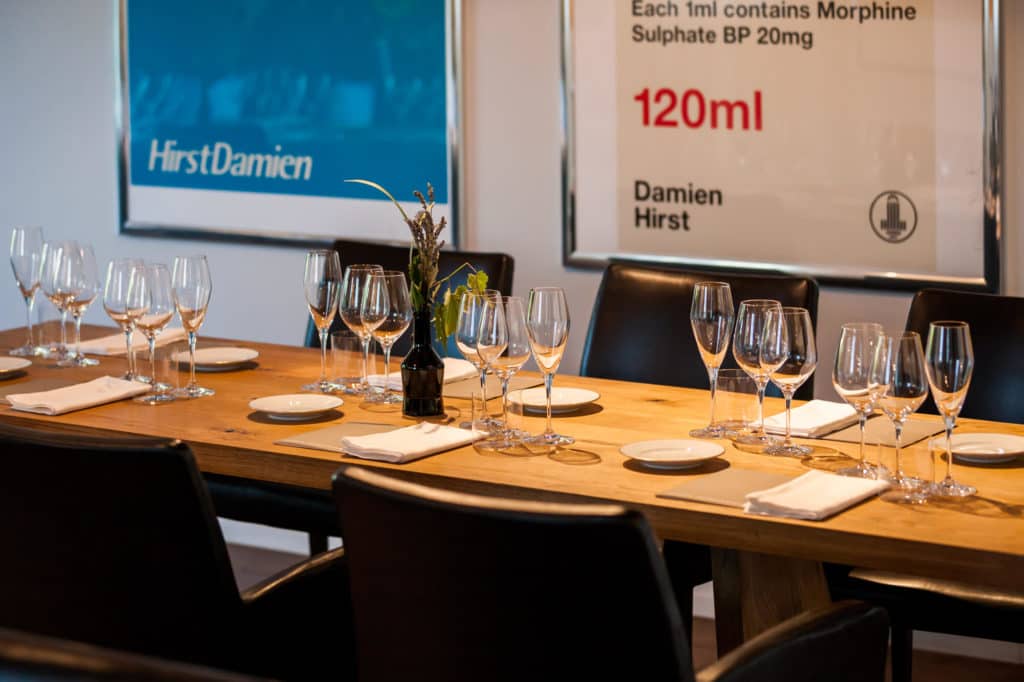
Restaurant interiors. Credits Marco Poderi
Finally, there is music that fills the house, it’s incredible! How did you create that aspect?
The music room is another reason we ended up purchasing this house. The former owner, a book lover, had created in one of the rooms an incredibly beautiful library, handmade carved wood library. And Massimo thought ‘my vinyl record collection, finally all those records that no longer fit on the shelves at our personal home. will have a home.’
*Not only did Massimo install his collection of rock & roll, country, classical and jazz vinyls, he was willed a collection of 8000 records, a surprise from a local surgeon who had recently passed away. Massimo and Lara added a 1970 Maxwell reel-to-reel tape (they have eight tapes of recordings of old jazz records which play freely throughout the house all day.
Everything you’re doing is telling a story, a story from the past, but a story that we can tell a friend. You walk out of here with stories. When you’re describing his dishes or all the other aspects of the project, these are beautiful stories and there are so many stories that come out of staying at Maria Luigia. What is the story behind the name Casa Maria Luigia?
The former owner was named Luigi Magelli, who inherited the property from his father, but he grew up quite spoiled and was a little bit of a “fighetto.” In 1900, he transformed it into what it is today, a place for people to enjoy – with good bones and great heritage. He created a pond with a little boathouse and did very intentional landscaping with beautiful oak trees, a weeping willow, etc. There was already this idea that the landscape wasn’t only for agriculture but for leisure and pastime. So, the LM were already there, it was already part of the DNA – Lara & Massimo. Maria Luigia is the name of Massimo’s mother, but was also the name of the second wife of Napoleon for whom Massimo’s mom was named after. Napoleon gave his wife the city of Parma and Corlono. Maria Luigia brought culture, art, music and theatre to the city of Parma very similar to how Luigi Magelli brought culture, landscaping, and entertainment to the property. So, Massimo and I, as L & M or M & L, wanted to contribute to that as well, bringing our love of art, music and food to this property.
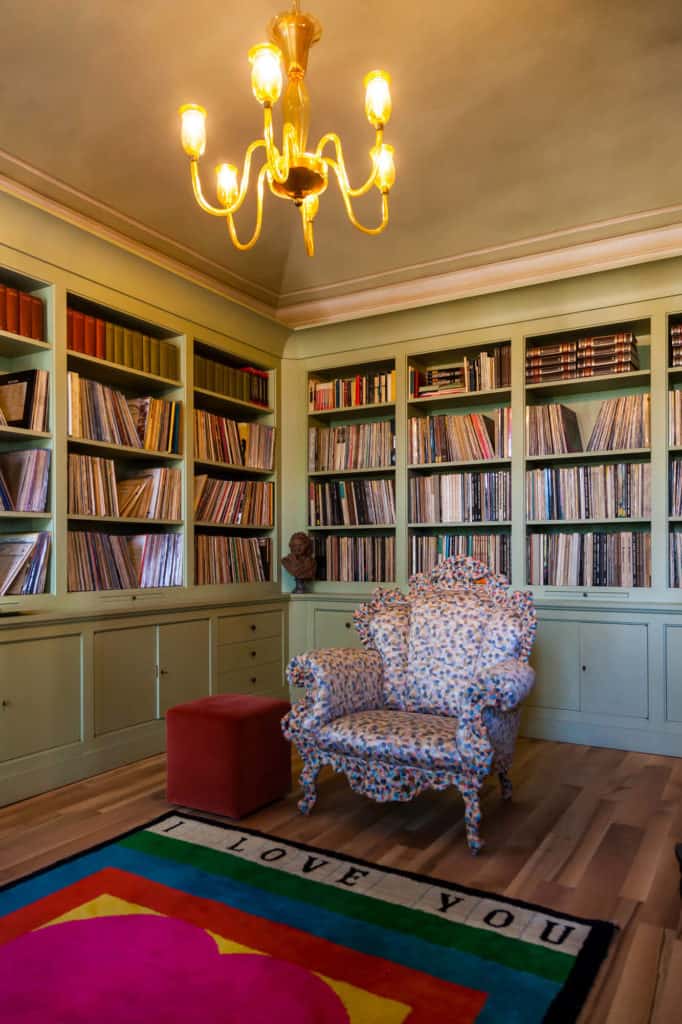
As told to Erica Firpo.
